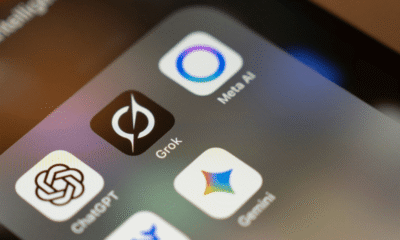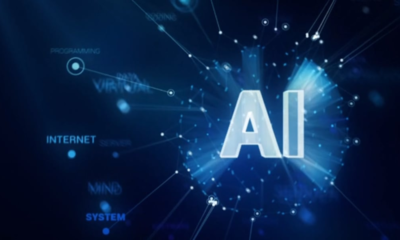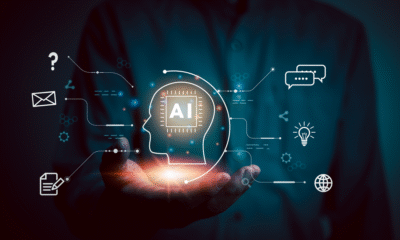Education
Microsoft Announces Security Advancements — Campus Technology
Microsoft Announces Security Advancements
Microsoft has announced major security advancements across its product portfolio and practices. The work is part of its Secure Future Initiative (SFI), a multiyear cybersecurity transformation the company calls the largest engineering project in company history.
The latest SFI progress report outlines security improvements made across 28 key objectives, including stronger identity protections, expanded threat detection capabilities, and enhanced default security features throughout Microsoft’s product lineup.
According to Microsoft, the effort represents the equivalent of 34,000 engineers working full time over 11 months. Microsoft Executive Vice President Charlie Bell said the initiative is focused on building security into every layer of the company’s operations and responding rapidly to threats.
“We have made progress across culture and governance by fostering a security-first mindset in every employee and investing in holistic governance structures to address cybersecurity risk across our enterprise,” said Bell in a blog post announcing the release of the report.
Identity, Detection and Threat Response
The company reported progress in hardening identity infrastructure. About 90% of Microsoft Entra ID tokens are now validated using a unified and secure software development kit. In a move prompted by the 2023 Storm-0558 breach, Microsoft has migrated token signing keys to hardware security modules and Azure confidential virtual machines, a shift aimed at minimizing the risk of forgery or key compromise.
Microsoft also introduced more than 200 new threat detections focused on adversary tactics, techniques and procedures. These detections — many of which will be added to Microsoft Defender — are reinforced by Red Team simulations designed to validate defense mechanisms in real-world scenarios.
Advancing Culture and Governance
As part of a company-wide cultural shift, Microsoft now requires every employee to define a Security Core Priority during performance reviews. The company says more than 50,000 employees have participated in its Security Academy training program, and 99% have completed its Trust Code compliance training.
On the governance side, Microsoft has enhanced its cybersecurity leadership by appointing deputy chief information security officers across key business areas and completing a full risk inventory. Progress on SFI objectives is reviewed biweekly by Microsoft’s senior leadership team and quarterly by its board of directors.
Secure by Design and Default
Microsoft also unveiled a new Secure by Design UX Toolkit, developed and tested by 20 internal product teams and now in use by 22,000 employees. The publicly available toolkit helps teams create more secure user interfaces by embedding best practices directly into the product design lifecycle. Early results point to fewer misconfigurations and more intuitive security settings for end users.
Eleven new security features have launched across Microsoft 365, Azure, Windows, and Microsoft Security. These include enforced multifactor authentication (MFA) for all Azure Portal and Entra ID administrator sign-ins, new identity segmentation models, and AI-informed fraud detection systems that helped prevent $4 billion in attempted fraud, according to the company.
Microsoft also revealed enhancements in secure operations, including broader adoption of its two-year security logging policy and ongoing development of quantum-safe cryptographic systems.
Security at Scale
The report outlines Microsoft’s progress toward “zero trust” principles, with many security improvements automated at scale. For example, over 6.3 million legacy or unused Microsoft tenants were removed, and 88% of cloud resources have been migrated to Azure Resource Manager.
To mitigate lateral movement attacks, Microsoft implemented identity isolation protocols and network segmentation, and deployed 98,000 hardened devices for accessing sensitive production environments. The company also introduced its Network Security Perimeter (NSP) technology, which helps isolate cloud services and enforce least-privilege access across 21 million resources.
Bell emphasized that cybersecurity progress is a continuous process, shaped by evolving threats and technological change. “SFI is how we’re rising to that challenge,” he wrote. “We also know that security is a team sport.”
Microsoft continues to participate in global security efforts, including the CISA Secure by Design pledge and the intergovernmental Pall Mall Process aimed at curbing the misuse of commercial intrusion tools.
For more information, read the Microsoft blog.
Education
FIORENTINO: STATE SYSTEM WILL TACKLE AI EDUCATION

In his new blog, State System of Higher Education Chancellor Christopher Fiorentino highlights an agreement signed with Google last week “to help students develop the AI competencies they will need in their future careers.” Writing that the State System can’t fool itself into thinking artificial intelligence is a “trend” or a “passing fancy,” Fiorentino pledges to enter the future with “eyes wide open.” He says perhaps the best contribution the state-owned universities can make is to ensure graduates know “what AI tools they should be prepared to use” as they start their careers.
The agreement to expand the State System’s partnership with Google includes IUP, Cheyney, East Stroudsburg, PennWest, and Millersville..
THE CHANCELLOR’S BLOG:
https://chancellorfiorentino.blogspot.com/2025/09/ai-is-not-fad.html
.
Education
AI in healthcare education: The future of learning explained

Artificial Intelligence (AI) is no longer just a tool for diagnostics; it is transforming the way healthcare professionals learn, train, and prepare for real-world practice. From medical students to practicing clinicians, AI-powered platforms are redefining education with immersive simulations, adaptive learning, and real-time feedback. Industry leaders weigh in on how AI is shaping the future of medical training.
AI AS A PERSONALISED LEARNING COMPANION
According to Ankit Modi, Founding Member & Chief Product Officer at Qure.ai,
“Artificial Intelligence is redefining healthcare education by enabling immersive, data-driven, and personalised learning experiences. AI-powered tools like virtual simulations, adaptive learning platforms, and predictive analytics are bridging the gap between theoretical knowledge and real-world clinical skills.”
He highlights that AI allows students to practice procedures in safe, simulated environments while improving decision-making and knowledge retention.
MAKING CLINICAL TRAINING IMMERSIVE AND ACCESSIBLE
Mr. Tejasvi Rao Veerapalli, CEO of Apollo Hospitals, Hyderabad, stresses the role of AI in scaling high-quality training:
“AI is revolutionising healthcare education by making clinical training more immersive, personalised, and efficient. Through intelligent simulation tools, real-time feedback, and adaptive learning platforms, students and professionals can now build skills in risk-free environments that mirror real-world scenarios.”
He adds that AI ensures deeper knowledge retention and bridges gaps in training access and expertise.
AI AS A MENTOR FOR FUTURE CLINICIANS
For Jeevan Kasara, Director & CEO of Steris Healthcare, AI is evolving beyond diagnostics to act as a learning mentor:
“Artificial Intelligence is revolutionising healthcare education, evolving from a diagnostic aid to a personalised mentor for future clinicians. Virtual patients strengthen diagnostic reasoning, adaptive assessment tailors learning to individual needs, and natural language tools make information instantly accessible.”
He emphasises that this transformation equips professionals with sharper skills, long-term retention, and empathetic patient care.
MOVING BEYOND TEXTBOOKS TO DYNAMIC LEARNING
Rustom Lawyer, Co-Founder and CEO of Augnito, sees AI as a bridge between static theory and interactive practice:
“Artificial Intelligence is ushering in a new era for healthcare education, firmly bridging the gap between theory and practice. By offering realistic simulations, personalised learning experiences, and real-time feedback, these technologies empower students and professionals to develop skills with greater confidence and accuracy.”
He notes that this shift accelerates training while making knowledge retention stronger and more practical.
THE FUTURE OF MEDICAL EDUCATION WITH AI
Across perspectives, one theme stands out: AI is not just a technological upgrade, but a pedagogical revolution. It makes education:
-
More immersive through simulations.
-
More personalised with adaptive learning.
-
More impactful with real-time feedback and recall.
By tailoring education to individual needs while keeping pace with advancing medicine, AI ensures the next generation of healthcare professionals are better equipped, more confident, and more empathetic from day one.
– Ends
Education
How to use ChatGPT at university without cheating: ‘Now it’s more like a study partner’ | University guide

For many students, ChatGPT has become as standard a tool as a notebook or a calculator.
Whether it’s tidying up grammar, organising revision notes, or generating flashcards, AI is fast becoming a go-to companion in university life. But as campuses scramble to keep pace with the technology, a line is being quietly drawn. Using it to understand? Fine. Using it to write your assignments? Not allowed.
According to a recent report from the Higher Education Policy Institute, almost 92% of students are now using generative AI in some form, a jump from 66% the previous year.
“Honestly, everyone is using it,” says Magan Chin, a master’s student in technology policy at Cambridge, who shares her favourite AI study hacks on TikTok, where tips range from chat-based study sessions to clever note-sifting prompts.
“It’s evolved. At first, people saw ChatGPT as cheating and [thought] that it was damaging our critical thinking skills. But now, it’s more like a study partner and a conversational tool to help us improve.”
It has even picked up a nickname: “People just call it ‘Chat’,” she says.
Used wisely, it can be a powerful self-study tool. Chin recommends giving it class notes and asking it to generate practice exam questions.
“You can have a verbal conversation like you would with a professor and you can interact with it,” she points out, adding that it can also make diagrams and summarise difficult topics.
Jayna Devani, the international education lead at ChatGPT’s US-based developer, OpenAI, recommends this kind of interaction. “You can upload course slides and ask for multiple-choice questions,” she says. “It helps you break down complex tasks into key steps and clarify concepts.”
Still, there is a risk of overreliance. Chin and her peers practise what they call the “pushback method”.
“When ChatGPT gives you an answer, think about what someone else might say in response,” she says. “Use it as an alternative perspective, but remember it’s just one voice among many.” She recommends asking how others might approach this differently.
That kind of positive use is often welcomed by universities. But academic communities are grappling with the issue of AI misuse and many lecturers have expressed grave concerns about the impact on the university experience.
Graham Wynn, pro-vice-chancellor for education at Northumbria University, says using it to support and structure assessments is permitted, but students should not rely on the knowledge and content of AI. “Students can quickly find themselves running into trouble with hallucinations, made-up references and fictitious content.”
Northumbria, like many universities, has AI detectors in place and can flag submissions where there is potential overreliance. At University of the Arts London (UAL) students are required to keep a log of their AI use to situate it in their individual creative process.
As with most emerging technologies, things are moving quickly. The AI tools students are using today are already common in the workplaces they will be entering tomorrow. But university is not just about the result, it is about the process and the message from educators is clear: let AI assist your learning, not replace it.
“AI literacy is a core skill for students,” says a UAL spokesperson, before adding: “Approach it with both curiosity and awareness.”
-

 Business2 weeks ago
Business2 weeks agoThe Guardian view on Trump and the Fed: independence is no substitute for accountability | Editorial
-
Tools & Platforms1 month ago
Building Trust in Military AI Starts with Opening the Black Box – War on the Rocks
-

 Ethics & Policy2 months ago
Ethics & Policy2 months agoSDAIA Supports Saudi Arabia’s Leadership in Shaping Global AI Ethics, Policy, and Research – وكالة الأنباء السعودية
-

 Events & Conferences4 months ago
Events & Conferences4 months agoJourney to 1000 models: Scaling Instagram’s recommendation system
-

 Jobs & Careers3 months ago
Jobs & Careers3 months agoMumbai-based Perplexity Alternative Has 60k+ Users Without Funding
-

 Podcasts & Talks2 months ago
Podcasts & Talks2 months agoHappy 4th of July! 🎆 Made with Veo 3 in Gemini
-

 Education2 months ago
Education2 months agoVEX Robotics launches AI-powered classroom robotics system
-

 Education2 months ago
Education2 months agoMacron says UK and France have duty to tackle illegal migration ‘with humanity, solidarity and firmness’ – UK politics live | Politics
-

 Podcasts & Talks2 months ago
Podcasts & Talks2 months agoOpenAI 🤝 @teamganassi
-

 Funding & Business3 months ago
Funding & Business3 months agoKayak and Expedia race to build AI travel agents that turn social posts into itineraries



















